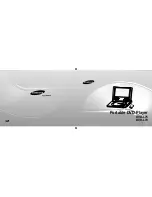
7
wiring / tri-amping
6-series allows conventional wiring, tri-wiring, or tri-amping using the supplied passive crossovers.
le conventional wiring will provide excellent sound, tri-wiring or tri-amping will further enhance the
ormance in no-compromise systems.
wiring uses three pairs of speaker wires for the high frequency and low frequency signal between an
plifier channel and its associated crossover network. This gives you the option of choosing wire
ch may have slightly different sonic characteristics in order to optimize performance of each fre-
ncy range. Also, it reduces the overall wiring resistance between the crossover and amplifier, much
the use of larger gauge wire. This option provides the most benefit when the crossover network is
unted a long distance away from the amplifier. If the crossover is mounted close to the amplifier it
oubtful that there will be an appreciable difference between tri-wiring and conventional wiring.
mping is similar to tri-wiring except that it uses a separate amplifier channel for the high-frequen-
nd low-frequency sections, instead of the single amplifier channel used in conventional and bi-wired
nections. tri-amping provides the additional advantages of reducing amplifier distortion and allow-
the amplifier’s level controls to provide an additional level of fine-tuning not possible with the tweet-
vel switch alone. In addition, at high power levels, a tri-amplified connection protects the tweeter
m amplifier clipping, which is most likely to occur on channels driving the midrange, due to the high-
nergy levels of midrange signals.
efully route the wires from the 6-series tweeter and woofer to the crossover mounting location. The
sover installation location should be reasonably accessible to allow easy connection of the wires,
eter level adjustment and midrange contour selection. If the crossover must be mounted in an inac-
ible location make the speaker wire connections and adjustments before final installation. Be sure
installation location has adequate clearance to allow the removal and replacement of the cover.
unting the crossover requires removing the top cover of it’s housing. Grasp the top cover at the front
back. Compress the cover slightly and lift it off the bottom of the housing.
unting the crossover requires four holes in a rectangular pattern 2 13/16" x 9 1/2" on a flat surface.
the provided template as a guide for drilling the mounting holes.
n the mounting holes in the bottom half of the crossover unit with the holes you have drilled at the
allation site. Pass the four #6 x 1 1/4" screws through the holes in the crossover unit, and tighten
m until the assembly is firmly in place. As before, do not over-tighten; this is especially important if
mounting surface is not perfectly flat.
r all the connections and any necessary adjustments have been made snap the cover back in place.
necting the system
the speaker wire as needed. Strip about no more than 1/4" (6mm) of the insulation from the ends.
t the exposed strands thoroughly to prevent any loose strands from causing a short circuit. If pos-
e “tin” the wire with a soldering iron. The wires attach to a removable connector strip, in it’s
ched position the screws face the bottom of the crossover.
t the prepared wire into the appropriate location (see diagram 10 or refer to the crossover circuit
d) in the connector strip and tighten the screws to secure the wires in place.
e the polarity marking on the crossover circuit board.
Summary of Contents for 641is
Page 2: ......




























